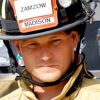FireRescue1 Unforgettable Calls is a place where firefighters across the country can stell their stories about the calls that have stayed with them, everything from the play by play of a mayday call to the memorable moment a patient thanked them for saving their life. If you want to share your story with the FireRescue1 community, please review our submission guidelines and email editor@firerescue1.com.
It was a very busy day, complete with some great training and quite a few calls.
My role had switched for the day. I was suddenly serving as the acting driver, working with a crew that I didn’t normally work with.
We had just finished dinner. The conversations at the firehouse table were fun and jovial, and all the world’s problems were solved, like they normally are around the firehouse table.
The tones went off for a bus versus SUV traffic accident. The call came in as a “bravo level” – non-life-threatening; first responders respond lights and siren, the medic unit responds non-emergency. Bravo level is, as you would expect, the second-lowest on the hierarchy of responses intensity. With had little information about the incident at that time.
In the back of my mind, I was thinking that maybe the bus and the SUV got into a fender bender with a little damage. The intersection where the accident occurred is a common one for accidents – and close to the firehouse. We had actually driven through this intersection a couple times during the day, noting the road construction and talking a little about how it could impact our responses.
Our response out of the firehouse was quick and efficient. Due to the proximity to the station, we were on scene in less than one minute. As we were pulling close, we saw a destroyed SUV in the middle of the intersection.
This was not a “bravo-level” call.
Upon seeing the wreckage, the lieutenant immediately called for more resources (medic units, command car and an additional engine) and instructed the crew on what he wanted to do. I looked around to survey where I wanted to place the rig. Out of the corner of my eye, I spotted the bus. The impact was hard enough to cause the bus to hit and ride up a rock wall.
So here we are: There’s a high- impact accident with the SUV in the middle of the intersection and a bus 40 feet away lodged on a rock wall. This changed the plan.
“Hey, lieutenant,” I called. “That bus may not be stable. I’m gonna put the rig just on the other side of the SUV.” His response was supportive as he pointed out some suggestions.
With the rig placed, my thought was to do a 360 to check for other patients, make sure the scene was safe, and that my crew had room and resources to do their jobs. This was a different thought process and role for me. I am normally handling the equipment.
We quickly checked the bus and its surroundings for any patients and safety hazards. The bus driver was able to self-extricate and had suffered a head injury. The driver remembered to put the brake on and shut down the bus, so we were good there. Fortunately, there was only one passenger and they were doing fine. Quickly checking in and around the bus, we determined that it was stable. Phew.
Back at the SUV, police officers arrived on scene and took control of traffic management, and multiple medic units had now arrived. The patients were scattered all through the SUV, making it difficult to determine who had been sitting where. A team of medics, along with my crew, worked to stabilize the patients and get the doors off.
As we cut the door off, one of the patients threw up (almost on us). With the doors off and vehicle stable, the crew and medics were able to remove all the patients. All this happened very quickly and efficiently. Fortunately, all people involved suffered only minor injuries.
What really stands out about this call is how quickly we came up on it. The limited information had all of us thinking a particular way, but upon arrival, that quickly changed. It seemed like a million questions ran through my mind in 15 seconds: Where was the bus? How many people are on that bus? Is the bus stable? What kind of fluid is that under the SUV? Are there three patients in the SUV or is it four? Are there power lines down? How can I control the traffic? Where is my best route? Were there other vehicles involved that we don’t see?
There was a lot to consider and process in such a short amount of time, but the crew did a great job. Were there things we could have done different? Of course, but we train and talk about calls like this for a reason. And that reason was today.
Stay safe.
[Read next: ‘You always remember your first: A first firefight filled with coincidence]














